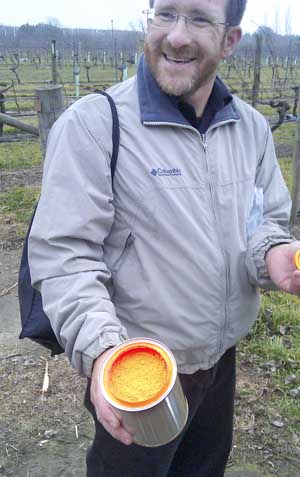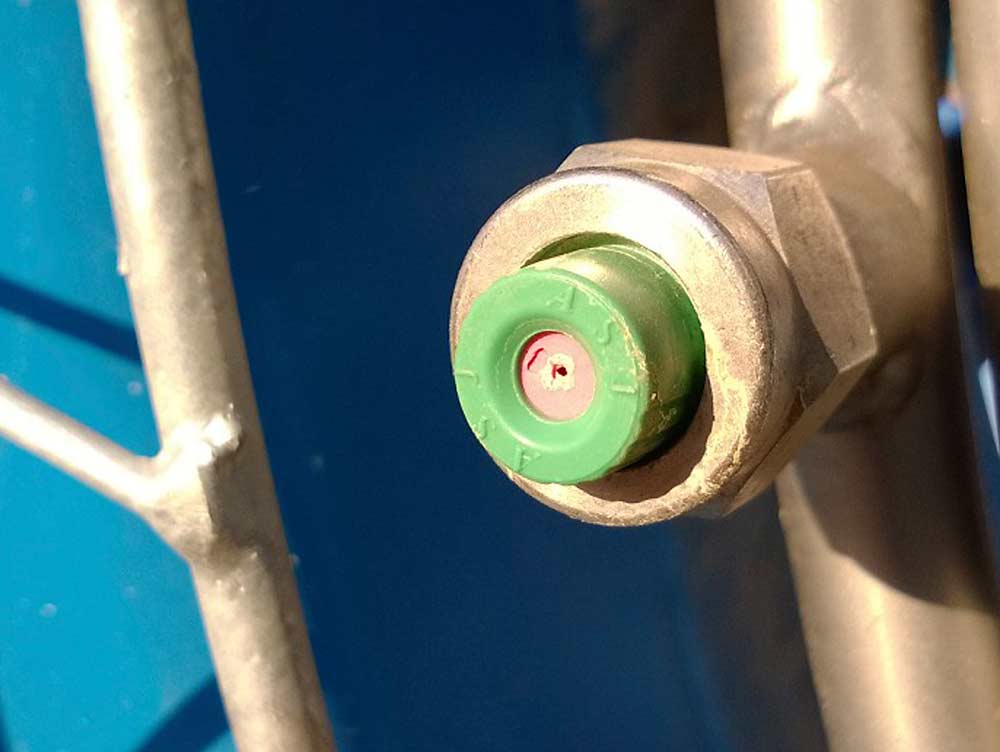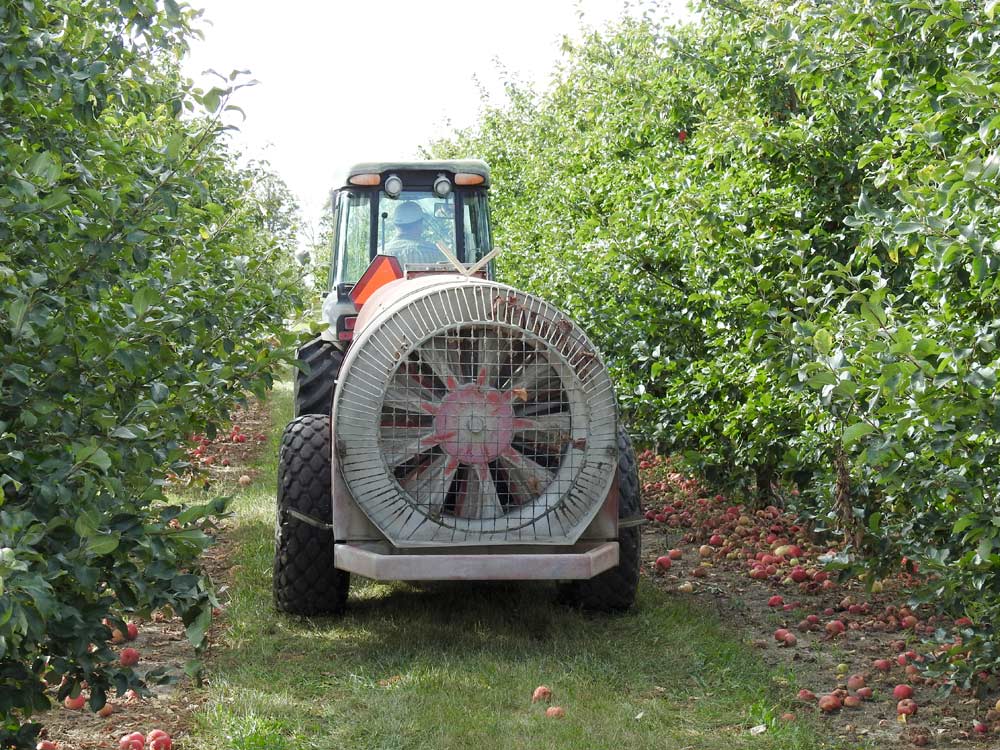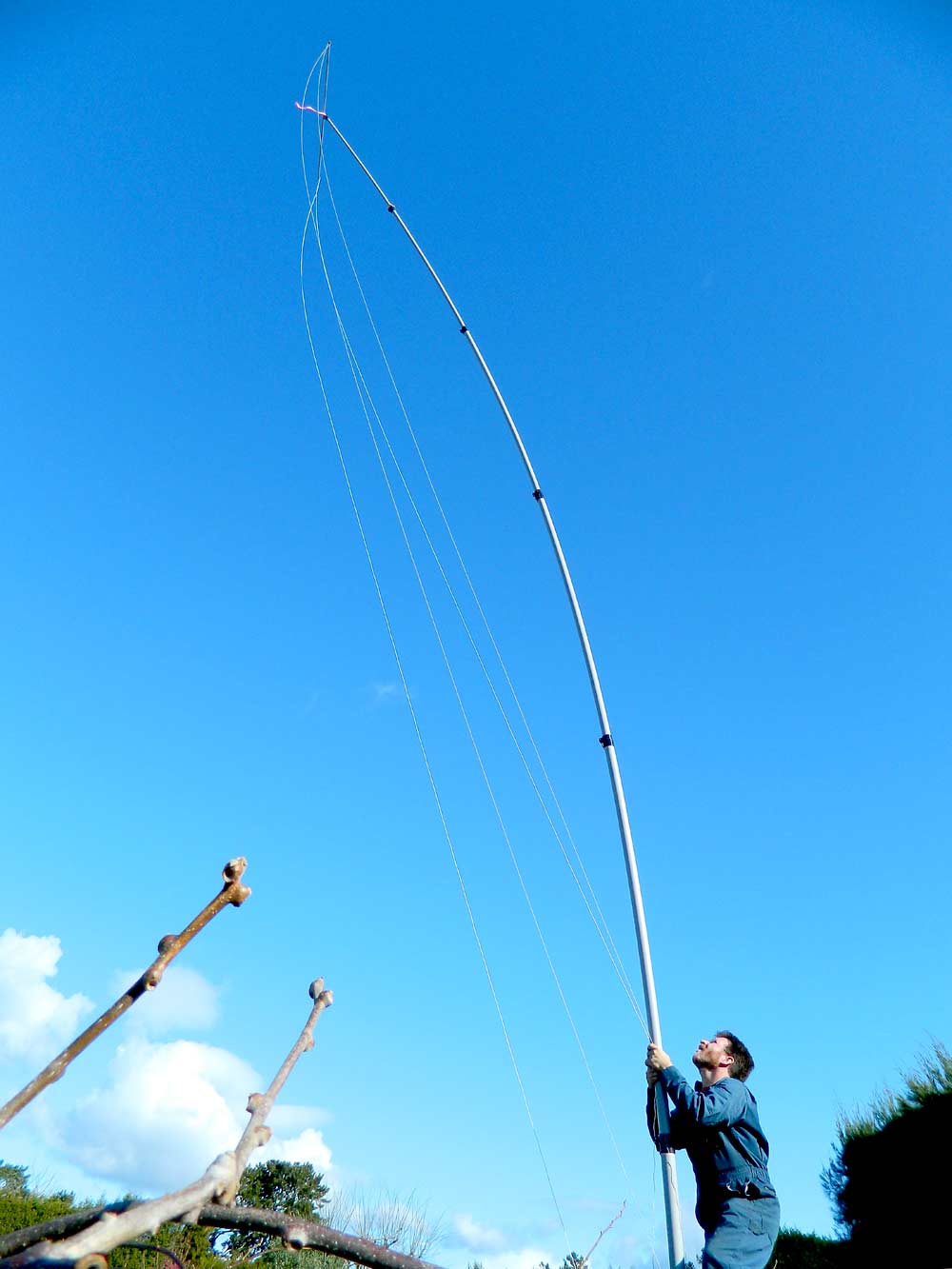
Spray expert Mark Ledebuhr, of the Midwest consulting company Application Insight, says a few tweaks to a spray program can give growers better coverage and keep waste to a minimum. The latter may not only save the grower thousands of dollars each year, but also keep overspray out of the environment. (Photo courtesy Mark Ledebuhr)
It may sound too good to be true, but spray expert Mark Ledebuhr insists that an investment of less than $500 and a few hours of time is enough to help growers improve spray coverage, protect the environment from overspray and potentially save tens of thousands of dollars — all at the same time.
Ledebuhr offered a list of six inexpensive steps growers should be taking to optimize their spray programs. The list arose from observations he has made over his 22 years of experience, first as co-founder of Ledebuhr Industries (Proptec sprayers), and now as owner of the Midwest consulting company Application Insight, which designs spray application systems and performs research on spray deposition and drift.
“These are six things that nobody wants to do but that can make a big difference in their operations,” he said.
1. Change your nozzles.
If a grower hasn’t calibrated the spray nozzles and isn’t sure when they were last changed, the time to replace them is now, he said. That’s because worn nozzles degrade the spray pattern. Even ceramic nozzles only last for about 1,000 hours of use, and others have a much shorter life.
“Nozzles have a very specific shape to make the spray, but as fruit growers, we apply abrasive spray materials that scour open the nozzles, so they no longer make the quality of spray they should,” he said, noting that the degradation in spray pattern is difficult to see until well after the nozzles should be changed.
He used a cherry tree as an example. “Every single leaf, including those at the tops of the trees, needs to have good coverage to prevent late-season diseases, but if you’re spraying coarse droplets from worn nozzles, they can’t move with the air jet through the tree — like finer droplets can — so they can’t get deep into the canopy,” he said.
The cost for changing nozzles runs $10 to $15 per nozzle, he estimated. A 40-acre grower might spend $40,000 annually on sprays, and by using worn nozzles, that grower could be overapplying by 10 to 20 percent — at a cost of at least $4,000.

Chipped and worn ceramic nozzles, such as this one, can affect spray pattern and lead to overspray. At just $10 to $15 apiece, replacement nozzles are well worth the money. (Photo courtesy Mark Ledebuhr)
“Why wouldn’t you spend $200 on new nozzles to save $4,000?” he asked. “There are not many things you can do on your farm to get you a better return on investment than having fresh nozzles on sprayers.”
2. Add air, not water
Often it takes more air — not more water — to get into difficult-to-reach areas of trees and vines, he said. “People oftentimes make the mistake of applying at a higher water rate if they aren’t getting control, but they can be shooting themselves in the foot. More water usually means coarser spray, but the finer drops are the ones that get into those weak-coverage areas, and the air is what pushes them there,” he said.
For a typical radial air-blast sprayer, he recommended using the deflectors to shape the air flow, with more blowing toward those areas that need it and less toward those areas that don’t. He added, “If you don’t have deflectors, fabricate some.”

One of Ledebuhr’s recommendations is to adjust deflectors to match the canopy, so spray goes where it’s needed and not where it isn’t. This photo of a radial air-blast sprayer shows slightly different positioning of the left and right deflectors, to match the dissimilar airflow on the two sides.
(Photo courtesy Mark Ledebuhr)
Another way to increase air flow is to gear down, he said. “Canopy penetration is about air energy per foot of row,” he said, “so if you cut your speed in half, there’s twice as much air energy to push spray to the top. If you’re not getting the coverage you want up there, slow down.”
3. Make all the spray count
Research shows that tree-fruit growers can lose up to 45 percent of the application from radial air-blast sprayers, with 30 to 40 percent going directly onto the ground and 10 percent or more above the tree as drift, according to Ledebuhr. “In other words, you’re only putting 55 percent of the spray — spray that you paid for — on the tree,” he said. “The rest of it is risk — drift risk, groundwater-contamination risk and lost money.”
One answer, he said, is to add air deflectors to direct more spray toward the target and turn off nozzles that are spraying off-target. He said he is not advocating that growers cut their rates and go off-label, but rather that growers “decide for themselves whether turning off nozzles that aren’t aimed at the target is going to put them at risk for lower coverage.”

Here, Ledebuhr sets up samplers for a drift study, important work because some 10 to 15 percent of application from radial air-blast sprayers can be lost above the trees as drift, he says. (Photo courtesy Mark Ledebuhr)
4. Take a step back
When setting up a sprayer for the season, Ledebuhr recommended growers step back and observe a practice run with water to see where the spray is going.
“It’s pretty amazing what you can learn in five minutes from standing in the bed of your pickup truck at the end of the row and watching someone else run the sprayer,” he said. “That’s true no matter how sophisticated your sprayer is, and it costs nothing but an hour or so of your time.”
5. Do a leaf test
While doing that practice run, growers should also staple some water-sensing spray cards to the leaves of a tree or two to see the actual spray coverage.
“For fungus and general disease control, you are shooting for 50 to 70 hits per square centimeter,” he said, noting that these can be small hits — just little pencil dots — and they should cover at least 10 to 20 percent of the surface on the card. He emphasized close attention to cards below 10 to 20 percent coverage, because that’s where disease is going to be.
The cost for water sensing spray cards runs about $70, he said, and the cards are available from sprayer dealers and most national sprayer catalogs.
6. Cut out the crud
Ledebuhr’s last tip is to put a pressure gauge (about $25) to the farthest-downstream nozzle position and test to make sure that it is reading the same as the main gauge.
“If it isn’t, and the main gauge is good, the system is probably full of crud. It could be a clogged filter, or perhaps a low spot in a hose where chemicals settled and formed a cake,” he said. “Either way, you need to get it cleaned out because your application rate is dependent on getting adequate pressure right to the last nozzle.”
With these six tips, growers can make a real difference in their spray programs.
“There’s the potential to save spray cost and put less spray into the environment, and more importantly, growers will get more spray to those hard-to-reach areas, so they will have a cleaner, healthier crop more likely to make grade,” he said. •
–by Leslie Mertz






Leave A Comment